26th August, 2025
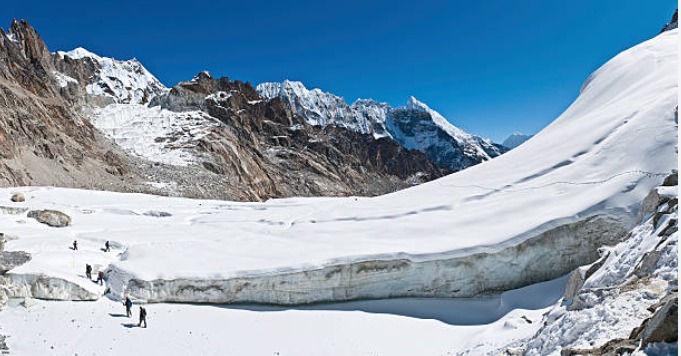
Jun 15, 2024
Lobuche Peak Climbing in April
- Introduction to Lobuche Peak
- Why Climb Lobuche Peak in April
- Climbing Route Overview
- Difficulty Level and Technicality
- Best Time to Climb Lobuche Peak
- Weather Conditions in April
- Temperature and Climate Expectations
- Day-by-Day Itinerary for March Climbing
- Essential Climbing Gear and Equipment
- Acclimatization and Altitude Sickness Prevention
- Physical Conditioning and Training Requirements
- Hiring a Guide or Joining a Group Expedition
- Cost and Budget Breakdown for the Climb
- Permits and Regulations for Climbing Lobuche Peak
- Accommodation Options in Kathmandu and Base Camp
- Food and Water Arrangements during the Climb
- Safety Measures and Emergency Protocols
- Cultural Significance of Lobuche Peak to the Local Community
- Conclusion: Is Climbing Lobuche Peak in March Right for You?
- Lobuche Peak Climbing Packages
Climbing Lobuche Peak in April offers a captivating mountaineering experience amidst the stunning landscapes of the Everest region in Nepal. Standing at an elevation of 6,119 meters (20,075 feet), Lobuche Peak is renowned for its challenging ascent and panoramic views of iconic Himalayan peaks, including Everest, Lhotse, Nuptse, and Ama Dablam. Here’s what you can expect when embarking on a climb to Lobuche Peak in April:
April marks the start of the spring season in Nepal, offering favorable weather conditions for climbing Lobuche Peak. Days are typically sunny with clear skies, providing excellent visibility of the surrounding peaks and valleys. The temperatures at lower elevations are mild and comfortable, while higher altitudes may still experience cold nights and mornings. The stable weather patterns during April make it a preferred month for climbers seeking optimal conditions for summit attempts.
Lobuche Peak offers multiple climbing routes, with the standard Southeast Ridge route being the most popular. This route involves technical sections, including steep ice and rock faces, requiring climbers to use crampons, ice axes, and ropes. The climb is challenging but accessible to climbers with previous mountaineering experience and adequate physical fitness. Experienced guides and support staff accompany climbers to ensure safety and provide assistance with route finding and technical maneuvers.
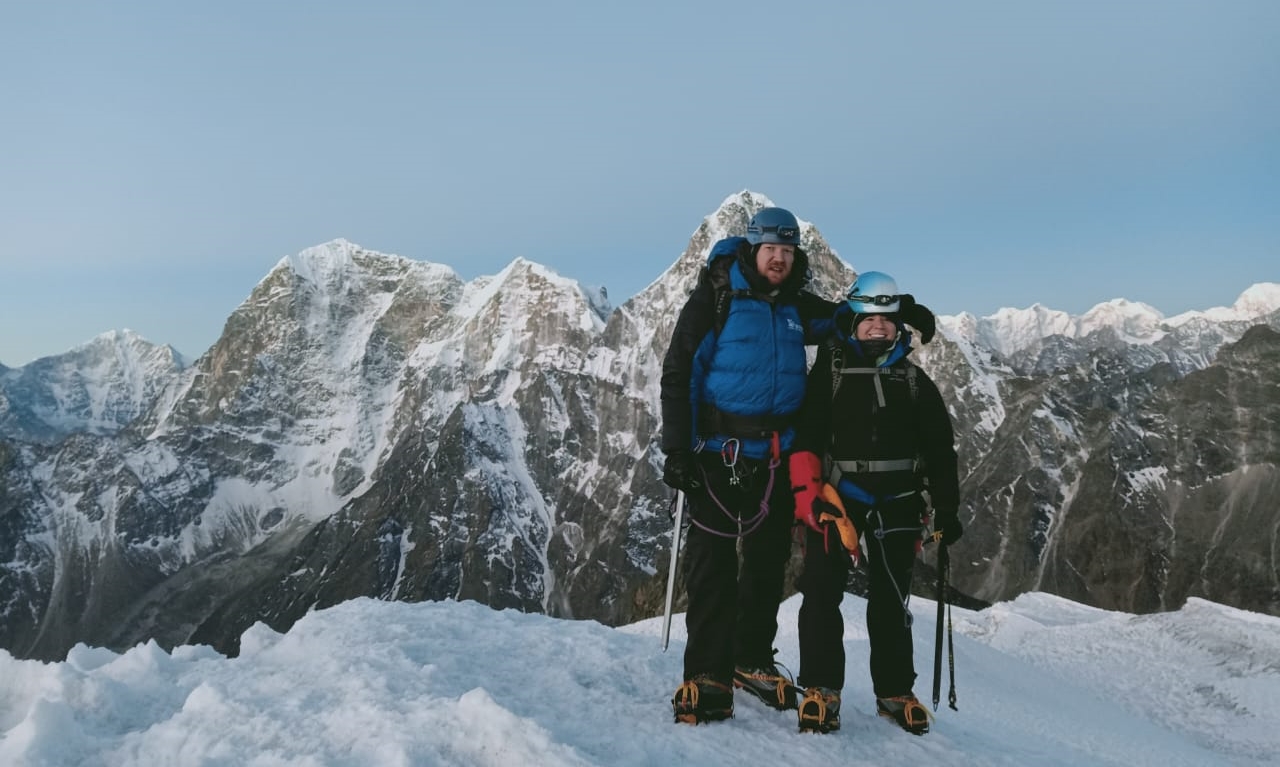
LOBUCHE PEAK CLIMBING
Lobuche East (6,119m/20,075ft), set in Nepal's stunning Khumbu on the Nepalese side of Everest.The best time to go trekking in Nepal is in Autumn (September-November) and in...
Climbing Lobuche Peak in April rewards climbers with breathtaking scenery at every turn. The trek to the peak passes through picturesque Sherpa villages, dense rhododendron forests, and expansive glacial valleys. As climbers ascend, they are treated to unparalleled views of the Khumbu region’s snow-capped peaks and rugged landscapes. The sight of Everest and neighboring giants glowing in the morning light is a highlight that leaves a lasting impression on climbers.
Proper preparation is crucial for a successful climb of Lobuche Peak in April. Begin by obtaining necessary permits from the Nepal Mountaineering Association and Sagarmatha National Park authorities. Arrange transportation to and from the trek starting point in Lukla, which involves a scenic flight from Kathmandu. Pack appropriate gear, including warm clothing, a four-season sleeping bag, mountaineering boots, and technical climbing equipment. Acclimatization days are built into the itinerary to help climbers adjust to higher altitudes gradually.
In addition to the physical challenges and natural beauty, climbing Lobuche Peak in April offers a cultural immersion into the Sherpa community’s rich traditions and hospitality. Trekkers pass through villages like Namche Bazaar and Dingboche, where they can explore monasteries, interact with locals, and learn about Sherpa culture and Buddhism.
Climbing Lobuche Peak in April combines adventure, natural beauty, and cultural discovery, making it a memorable and rewarding experience for mountaineers seeking to conquer a Himalayan summit.

LOBUCHE PEAK SUMMIT RETURN BY HELICOPTER
A real climbing adventure that will leave you stunned at the beauty of the Himalayan Mountains. The Lobuche Peak Climbing expedition in the spectacular Khumbu region of Nepal has been ranked by Lonely...
Introduction to Lobuche Peak
Lobuche Peak, standing majestically at 6,119 meters in the Khumbu region of Nepal, is a significant mountain often chosen by climbers seeking to scale their first peak. Known for its stunning vistas of the Himalayas, including the iconic Everest and Lhotse, Lobuche Peak offers an exhilarating climbing experience amidst breathtaking natural beauty. The peak is popular for both trekkers and experienced mountaineers looking to enhance their skills before attempting more challenging summits. The diverse terrain of the Lobuche area features glacial landscapes, rocky ridges, and steep ascents, making it an unforgettable adventure for any climber. As part of the Everest region, Lobuche is also well integrated into the larger trekking experience, allowing climbers to explore the rich Sherpa culture and unique flora and fauna of the region. Climbing Lobuche Peak requires not only physical endurance but also a solid understanding of high-altitude mountaineering techniques, particularly as altitude acclimatization and weather conditions can significantly affect the climb. It serves as an ideal training ground for those preparing for higher peaks, and the stunning panoramic views reward climbers for their dedication and effort during the ascent.
Why Climb Lobuche Peak in April
April is regarded as one of the finest months to attempt a climb of Lobuche Peak, thanks to a combination of favorable weather conditions and stunning landscapes. Spring brings milder temperatures in the Khumbu region, creating an ideal environment for climbers to enjoy their ascent. Average daytime temperatures range from -5°C to 10°C, which, although chilly, are significantly more comfortable than the frigid winters. Additionally, the skies in April tend to be clearer, offering climbers unobstructed views of the magnificent Himalayan peaks. The lower likelihood of precipitation allows for safer climbing conditions, reducing the chance of avalanches and rockfalls.
Another compelling reason to climb Lobuche Peak in April is the vibrant sherpa culture on display during the Spring season. As communities prepare for the busy trekking season, climbers can immerse themselves in local traditions and festivities. The flora begins to bloom, providing trekkers with a colorful landscape rich with wildflowers. Moreover, April attracts fewer climbers compared to the peak month of May, offering a more tranquil climbing experience. For those looking to grab excellent photo opportunities and witness nature's beauty, April is undoubtedly an opportune time to tackle Lobuche Peak.

LOBUCHE PEAK EXPEDITION 14 DAYS
The Lobuche Peak Expedition is a 14-day trekking adventure that takes you to the heart of the Khumbu region in Nepal. It is a popular trekking peak in the Himalayas, with stunning views of the surroun...
Climbing Route Overview
The standard route to climb Lobuche Peak typically starts from the town of Lukla, where most trekkers fly in. The journey involves diverse landscapes beginning with easy trekking along the banks of the Dudh Koshi river, making its way through picturesque villages, lush forests, and high-altitude pastures. The primary trail leads through renowned sites such as Namche Bazaar, Tengboche, and Pheriche, where climbers acclimatize their bodies to the elevation. The approach to Lobuche generally follows the Everest Base Camp trail, allowing climbers to enjoy stunning views of surrounding peaks, including the mighty Mount Everest and the dramatic Lhotse face.
Once reaching the base camp of Lobuche, climbers often undertake a series of acclimatization hikes to the nearby Lobuche East before attempting the summit. The ascent to the summit involves traversing scree slopes and rocky terrains, where climbers must navigate carefully and use fixed ropes in certain areas. Summit day starts early due to the necessity of reaching the top before the midday winds pick up. Climbers ascend steep sections, including the famous "step," where technical skills come into play. With adequate preparation, climbers are rewarded with breathtaking panoramic views, which are a testament to their hard work and perseverance throughout this exhilarating journey.
Difficulty Level and Technicality
Lobuche Peak is classified as a non-technical climb, suiting climbers with basic mountaineering skills. However, it is crucial to note that climbing at high altitude presents inherent risks and challenges. The peak's height means that climbers will need to acclimatize adequately to avoid altitude sickness. The climb involves navigating through challenging terrains that require a solid level of physical fitness and mental stamina. Steeper sections can demand the use of fixed ropes, especially near the summit, making it essential for climbers to be familiar with basic climbing techniques.
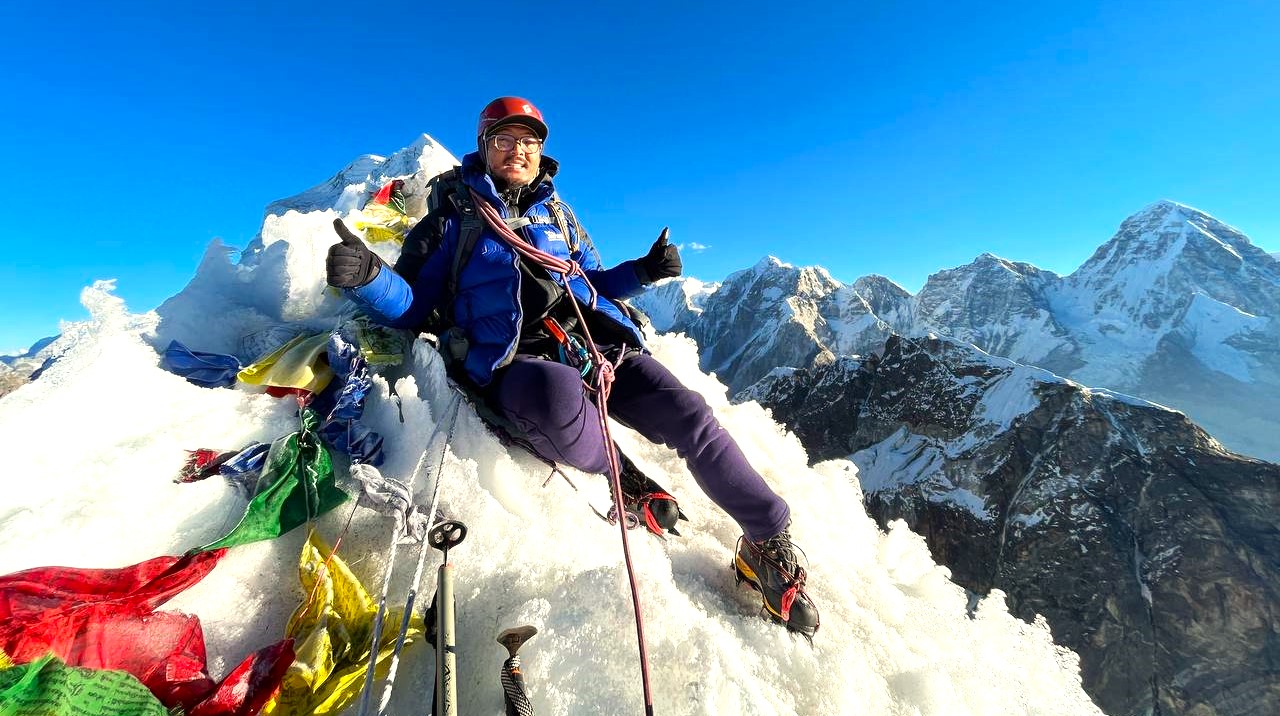
LOBUCHE PEAK EXPEDITION 15 DAYS
Lobuche Peak Expedition is a thrilling adventure that takes you to the heart of the Khumbu region in Nepal. The peak stands at an altitude of 6,119 meters and offers stunning views of the surrounding...
For beginners, this means gaining experience in the use of crampons and ice axes, along with understanding how to maneuver safely on snow and ice. Given that Lobuche Peak is often climbed alongside the Everest Base Camp trek, many climbers use this opportunity to hone their skills for more ambitious climbs. Although the climb is non-technical, it should not be underestimated; preparation and respect for the mountain are key to a successful summit attempt. As weather conditions can change rapidly in high altitudes, climbers must also be equipped with the knowledge of assessing weather patterns, choosing the right gear, and being prepared to make quick decisions en route. Overall, climbing Lobuche Peak remains a rewarding endeavor for anyone aspiring to explore the heights of the Himalayas
Best Time to Climb Lobuche Peak
Lobuche Peak, located in the Everest region of Nepal, is a popular destination for mountaineers seeking a challenging yet rewarding climb. The best time to climb Lobuche Peak is during the pre-monsoon (spring) and post-monsoon (autumn) seasons. Specifically, April and October are considered the prime months for this adventure. During these periods, the weather is relatively stable, and the skies are clear, offering breathtaking views of the surrounding Himalayan peaks. The temperatures are also more moderate, making the climb more comfortable. Additionally, these months see less precipitation, reducing the risk of avalanches and other weather-related hazards. Climbing during these optimal times not only enhances safety but also maximizes the overall experience, allowing climbers to fully appreciate the stunning landscapes and achieve their summit goals.
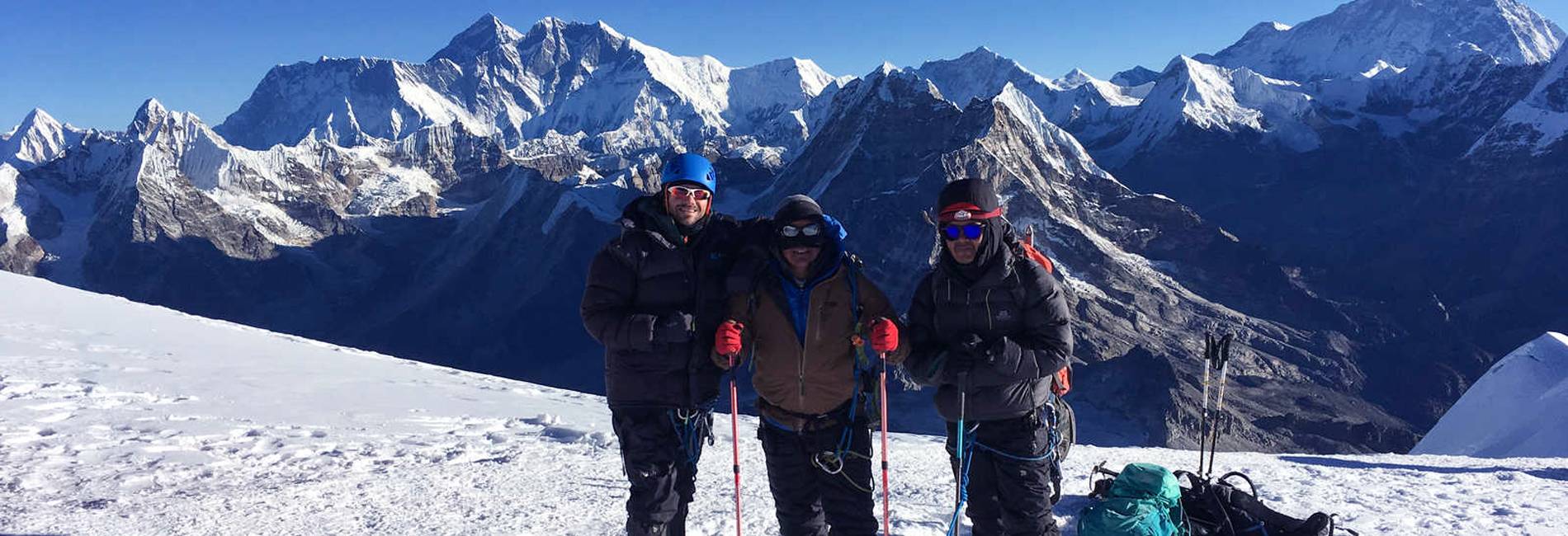
MERA PEAK CLIMBING
Mera Peak Climbing is an exhilarating adventure in Nepal that gives you an opportunity to reach the summit of Mera Peak at more than 6400m above sea level. Actually, it is the highest climbing (w...
Weather Conditions in April
April is one of the best months to climb Lobuche Peak due to its favorable weather conditions. During this time, the region experiences stable weather with clear skies, making it ideal for mountaineering. Daytime temperatures at lower altitudes range from 10°C to 15°C (50°F to 59°F), while nighttime temperatures can drop to -5°C to -10°C (23°F to 14°F). As you ascend higher, temperatures become colder, especially above 5,000 meters (16,404 feet). The wind speeds are generally moderate, but climbers should be prepared for occasional gusts. Precipitation is minimal in April, reducing the risk of snowstorms and avalanches. The clear weather also provides stunning panoramic views of the surrounding peaks, including Everest, Lhotse, and Nuptse. Overall, April offers a perfect balance of mild temperatures and stable weather, making it an excellent choice for climbing Lobuche Peak.
Temperature and Climate Expectations
When planning a climb to Lobuche Peak, understanding the temperature and climate expectations is crucial for a successful expedition. The climate in the Everest region varies significantly with altitude. At lower elevations, such as Lukla (2,860 meters/9,383 feet), temperatures in the spring and autumn months range from 10°C to 20°C (50°F to 68°F) during the day and can drop to 0°C to -5°C (32°F to 23°F) at night. As climbers ascend to higher altitudes, such as Lobuche Base Camp (4,950 meters/16,240 feet), daytime temperatures range from -2°C to 5°C (28°F to 41°F), while nighttime temperatures can plummet to -10°C to -15°C (14°F to 5°F). Above 5,000 meters (16,404 feet), temperatures are consistently below freezing, and climbers must be prepared for extreme cold, especially during early morning summit attempts. Wind chill can further lower the perceived temperature, making proper layering and high-quality gear essential. Understanding these temperature and climate expectations helps climbers prepare adequately and ensures a safer and more enjoyable ascent.

ISLAND PEAK CLIMBING
Sherpa Expedition & Trekking (Est.1977) are pleased to announce FOR ADVENTURERS the most awesome, exhilarating & unforgettable climbing and treks on offer anywhere today!...
Day-by-Day Itinerary for March Climbing
A well-planned day-by-day itinerary is essential for a successful climb of Lobuche Peak in March. Here is a suggested itinerary:
Day 1: Arrival in Kathmandu (1,400 meters/4,593 feet). Rest and prepare for the trek.
Day 2: Fly to Lukla (2,860 meters/9,383 feet) and trek to Phakding (2,610 meters/8,563 feet).
Day 3: Trek from Phakding to Namche Bazaar (3,440 meters/11,286 feet).
Day 4: Acclimatization day in Namche Bazaar. Explore the town and hike to Everest View Hotel.
Day 5: Trek from Namche Bazaar to Tengboche (3,860 meters/12,664 feet).
Day 6: Trek from Tengboche to Dingboche (4,410 meters/14,468 feet).
Day 7: Acclimatization day in Dingboche. Hike to Nagarjun Hill (5,100 meters/16,732 feet).
Day 8: Trek from Dingboche to Lobuche (4,940 meters/16,207 feet).
Day 9: Trek from Lobuche to Lobuche Base Camp (4,950 meters/16,240 feet).
Day 10: Acclimatization and training day at Lobuche Base Camp.
Day 11: Summit attempt and return to Base Camp.
Day 12: Contingency day for weather or additional summit attempt.
Day 13: Trek from Lobuche Base Camp to Pangboche (3,985 meters/13,074 feet).
Day 14: Trek from Pangboche to Namche Bazaar.
Day 15: Trek from Namche Bazaar to Lukla.
Day 16: Fly back to Kathmandu.
Day 17: Departure from Kathmandu.
This itinerary allows for proper acclimatization and includes contingency days to account for weather or other delays, ensuring a safer and more enjoyable climb.
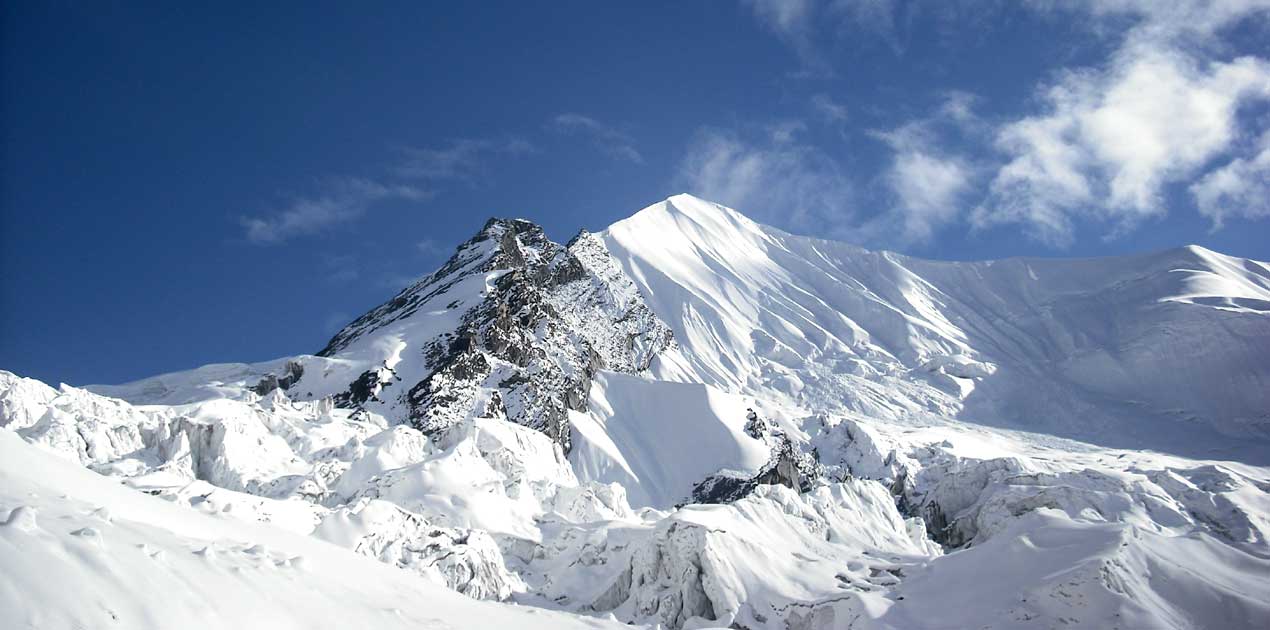
PACHERMO PEAK CLIMBING
Believe in yourself! You have what it takes to summit this beautiful peak in the remote Rolwaling district in the northeast of Nepal – near the Tibetan border. It is physically demanding, but with som...
Essential Climbing Gear and Equipment
Climbing Lobuche Peak requires a comprehensive set of gear and equipment to ensure safety and success. Essential items include:
1. Clothing: Layered clothing system with moisture-wicking base layers, insulating mid-layers, and waterproof outer layers. Down jacket, thermal underwear, and insulated gloves are crucial for warmth.
2. Footwear: Sturdy mountaineering boots with crampon compatibility, gaiters, and warm socks.
3. Climbing Gear: Climbing harness, helmet, ice axe, crampons, carabiners, ascenders, and descenders.
4. Camping Equipment: Four-season tent, sleeping bag rated for -20°C (-4°F), sleeping pad, and cooking stove.
5. Navigation and Safety: Map, compass, GPS device, headlamp with extra batteries, first aid kit, and personal locator beacon.
6. Hydration and Nutrition: Water bottles or hydration system, water purification tablets, high-energy snacks, and meals.
7. Personal Items: Sunglasses with UV protection, sunscreen, lip balm, toiletries, and a camera.
Proper gear and equipment are essential for a safe and successful climb of Lobuche Peak. Ensuring that all items are of high quality and in good condition can make a significant difference in the overall experience and safety of the expedition.
Acclimatization and Altitude Sickness Prevention
Acclimatization is crucial when climbing high-altitude peaks like Lobuche. The ascent should be gradual, allowing the body time to adjust to decreased oxygen levels. It's recommended to spend at least a few days at higher altitudes before attempting the summit. Hydration is key to preventing altitude sickness, along with maintaining a steady pace and recognizing symptoms such as headaches and nausea.
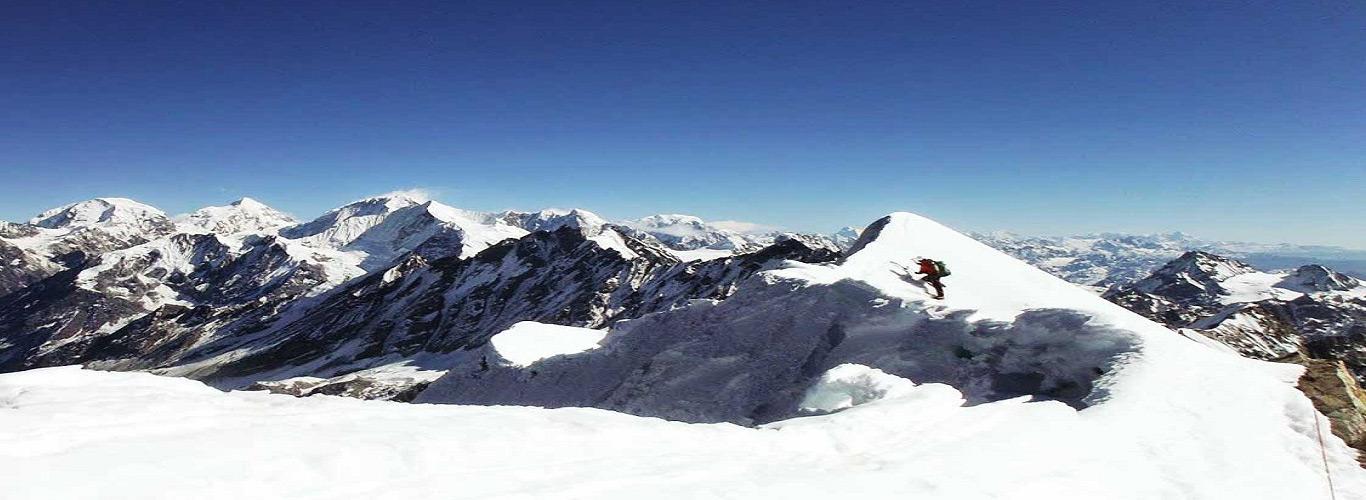
NAYA KHANG PEAK CLIMBING
Mountains, monasteries, and high passes are just a taste of what you will encounter on this amazing adventure in the Langtang district of Nepal that takes you to the summit of Naya Khang Peak (5846m)...
Physical Conditioning and Training Requirements
Preparing for Lobuche Peak involves a combination of cardiovascular endurance, strength training, and stamina-building exercises. Cardiovascular workouts like running, cycling, and hiking are essential, along with strength training for core muscles and legs. Endurance training in varied weather conditions simulates the challenges of high-altitude climbs, ensuring climbers are physically prepared for the demands of the trek.
Hiring a Guide or Joining a Group Expedition
While climbing Lobuche Peak independently is possible, hiring a local guide or joining a group expedition enhances safety and logistical ease. Guides provide invaluable local knowledge, navigation expertise, and support in emergencies. Group expeditions offer camaraderie and shared resources, reducing individual costs and providing a structured itinerary. Choosing reputable guides and companies ensures compliance with local regulations and safety standards.
Cost and Budget Breakdown for the Climb
The cost of climbing Lobuche Peak varies widely based on factors such as guide services, equipment rental, permits, and duration of the expedition. A comprehensive budget should include costs for flights to Lukla, accommodation in Kathmandu and along the trek, trekking permits (including climbing permits), food, equipment (rental or purchase), and gratuities for guides and porters. Budgeting for unforeseen expenses ensures financial readiness for the expedition.
Permits and Regulations for Climbing Lobuche Peak
Climbing Lobuche Peak requires several permits, including a trekking permit for the Everest region and a climbing permit specifically for Lobuche Peak. These permits are obtained through registered trekking agencies in Nepal and are essential for legal and safety reasons. Regulations aim to manage environmental impact and ensure climbers' safety, including provisions for emergency services and waste management. Understanding and adhering to these regulations contribute to sustainable trekking practices and a safe climbing experience in the Himalayas.
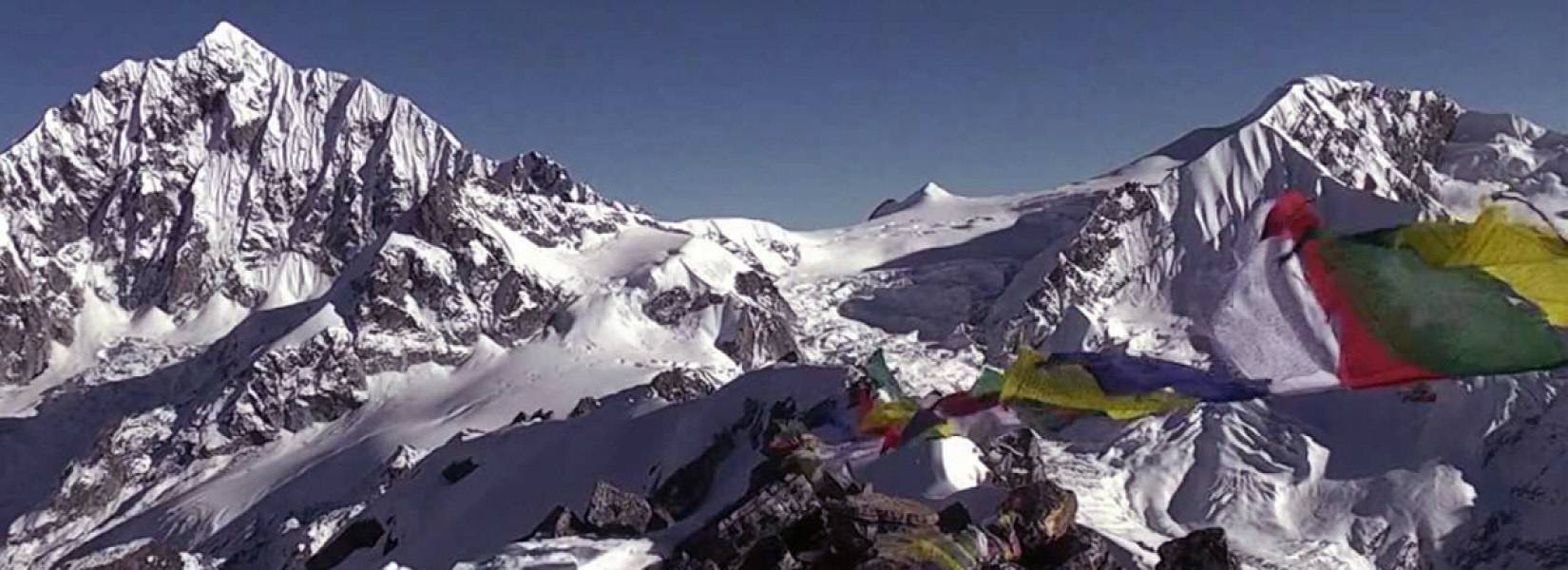
LARKE PEAK CLIMBING
Can there be any greater feeling than standing at the top of a mountain?This climb will test your endurance and determination and give you a true sense of achievement. The rewards are numerous. Firstl...
Accommodation Options in Kathmandu and Base Camp
Accommodation is a crucial aspect of any trekking or climbing expedition, and the Everest Base Camp trek is no exception. In Kathmandu, trekkers can choose from a wide range of accommodation options, ranging from budget-friendly guesthouses and hostels to luxury hotels. It is essential to book accommodations in advance, especially during peak season, to ensure availability.
In Kathmandu, trekkers can stay in the tourist hub of Thamel, which offers easy access to trekking gear shops, restaurants, and other amenities. Some popular accommodation options in Kathmandu include the Hotel Tibet International, Hotel Shambala, and the Kathmandu Guest House.
At the Everest Base Camp, accommodation options are limited, and trekkers typically stay in tea houses or lodges that offer basic amenities. These tea houses are run by local families and provide a unique opportunity to experience the local culture and hospitality. The tea houses are equipped with basic facilities, including beds, blankets, and toilets, and offer meals and hot beverages.
Food and Water Arrangements during the Climb
Food and water arrangements are critical components of the Everest Base Camp trek. In Kathmandu, trekkers can find a wide range of restaurants serving Nepalese, Indian, Chinese, and Western cuisine. It is essential to stick to hygienic food and water to avoid altitude sickness and other health issues.
During the trek, trekkers can expect to eat at tea houses or lodges, which serve simple but nutritious meals, including dal bhat, noodles, and soups. It is recommended to bring water purification tablets or a water filter to ensure access to safe drinking water. Trekkers can also purchase bottled water at tea houses, but this can be expensive.
Safety Measures and Emergency Protocols
Safety is of paramount importance during the Everest Base Camp trek, and trekkers must take necessary precautions to ensure their safety. The trek involves walking on steep and uneven terrain, and trekkers must be prepared for altitude sickness, avalanches, and other hazards.
To mitigate these risks, trekkers must acclimatize to the high altitude by ascending gradually and taking rest days as needed. They must also be equipped with proper gear, including crampons, ice axes, and harnesses, and must know how to use them.
In case of an emergency, trekkers must have a plan in place, including a first aid kit, a satellite phone, and a emergency contact number. The Nepalese government has established a rescue system, which includes helicopter evacuation, but this can be expensive and may not be available in all areas. Trekkers must also be prepared for unexpected weather changes and must have a contingency plan in place.Environmental Impact and Responsible Climbing Practices

THORONG PEAK CLIMBING
Thorong Peak Climbing requires that you are reasonably fit and have a burning desire to see some of the most spectacular mountain scenery in the Annapurna region of Nepal. Besides climbing to 6144m, y...
The Everest Base Camp trek and Lobuche Peak climb have a significant environmental impact, and it is essential for trekkers to adopt responsible climbing practices to minimize their footprint. The trek passes through the Sagarmatha Zone, which is a protected area, and trekkers must respect the local environment and wildlife. The increasing number of trekkers has led to issues such as litter, human waste, and erosion, which can have long-term consequences for the environment. To mitigate these impacts, trekkers must follow the principles of Leave No Trace, which include packing out trash, using biodegradable soap, and staying on designated trails. Trekkers must also respect the local flora and fauna, including the endangered Himalayan tahrs and snow leopards. Additionally, trekkers can reduce their carbon footprint by using public transportation, staying in eco-friendly lodges, and avoiding single-use plastics.
Cultural Significance of Lobuche Peak to the Local Community
Lobuche Peak holds significant cultural and spiritual importance to the local Sherpa community. The peak is considered sacred, and the Sherpas believe that it is the dwelling place of the gods. The trek to Lobuche Peak passes through several Sherpa villages, including Lukla, Namche Bazaar, and Tengboche, which offer a glimpse into the traditional Sherpa way of life. The Sherpas are known for their hospitality, and trekkers can experience their warm welcome and generosity during the trek. The trek also provides an opportunity to visit the Tengboche Monastery, which is one of the highest monasteries in the world and is an important center of Buddhism. Trekkers can participate in a puja ceremony, which is a Buddhist blessing ceremony, and can learn about the local culture and traditions.

YALA PEAK CLIMBING
Don’t let the height frighten you (5520m). This is a non-technical climb that will afford views for miles and miles in the Langtang region of Nepal. From the summit, you can see Mt. Sishapangma...
Conclusion: Is Climbing Lobuche Peak in March Right for You?
Climbing Lobuche Peak in March can be a challenging but rewarding experience. The weather is generally stable, and the views of the Himalayas are breathtaking. However, the climb requires a good level of physical fitness, and trekkers must be prepared for the high altitude and potential risks. Trekkers must also be respectful of the local environment and culture, and must adopt responsible climbing practices. If you are an experienced trekker or climber looking for a new challenge, and are willing to take the necessary precautions, then climbing Lobuche Peak in March may be right for you. However, if you are a beginner or are not comfortable with high altitudes, you may want to consider a different trek or climb. Ultimately, the decision to climb Lobuche Peak in March depends on your individual circumstances, experience, and goals.
Lobuche Peak Climbing Packages
Lobuche Peak Summit Return By Helicopter
Lobuche Peak Expedition 14 Days
Lobuche Peak Expedition 15 Days
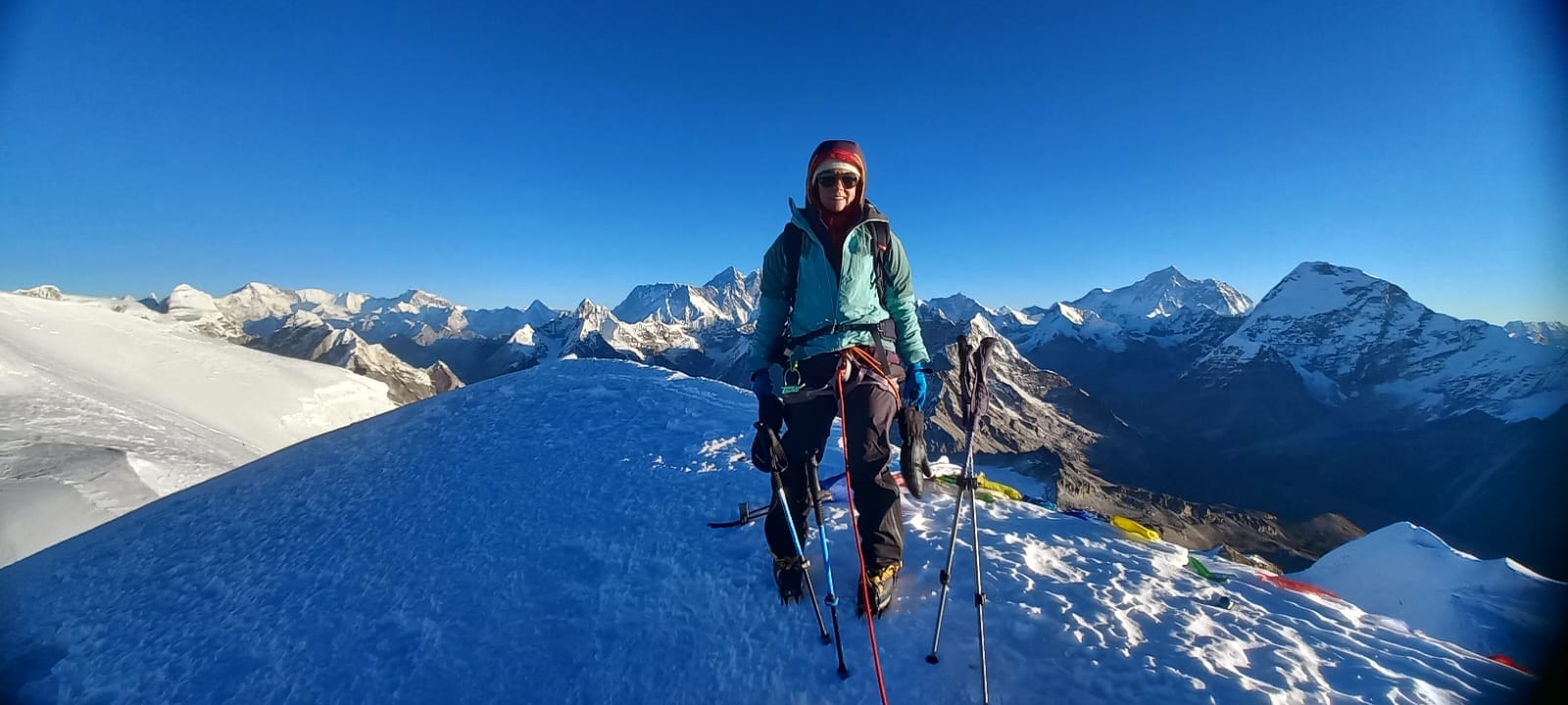
Three Peak Expedition
Embark on an unforgettable journey to the heart of the Himalayas as you conquer three majestic peaks: Mera Peak, Island Peak, and Lobuche Peak. This ultimate adventure combines technical climbing, bre...
Any Questions? Let Us Know.
Recent Posts
17th June, 2025


















